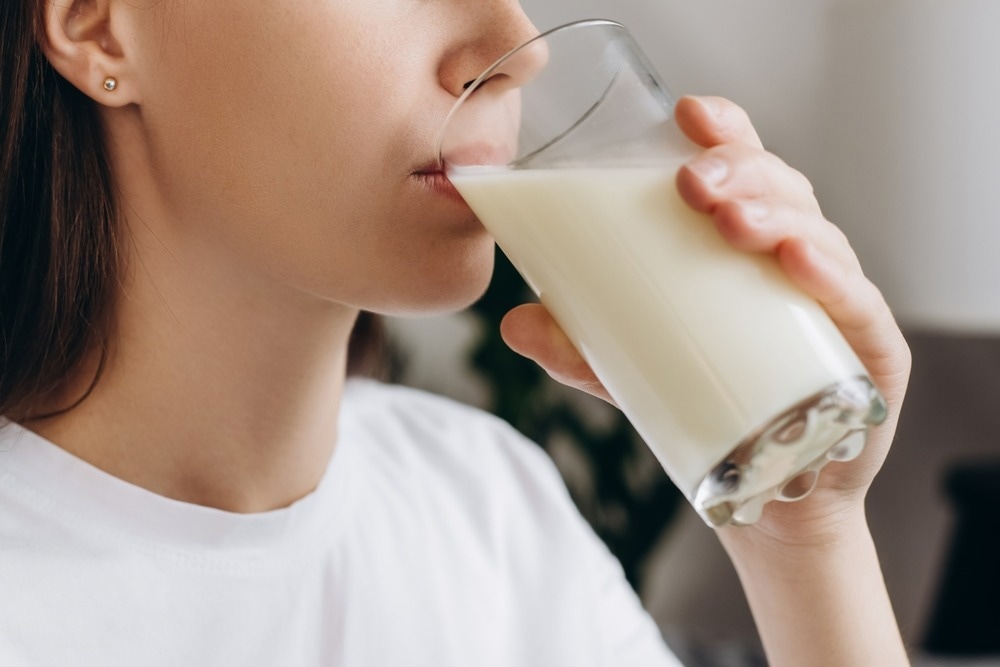The researchers of a recent study published in Nature Metabolism investigated the relationship between milk consumption and type 2 diabetes (T2D) among lactase non-persistent (LNP) individuals.
Background
Cow’s milk is part of the human diet; however, its relation to T2D is debatable. The effects of milk and milk products on T2D risk are inconclusive and vary by population. Recent research reveals a relationship between the lactase (LCT) gene, milk consumption, and gut microbiota, with genome-wide association study (GWAS) tying the host LCT locus to Bifidobacterium species, which absorb milk oligosaccharides/lactose and may be used as probiotics to decrease inflammation.
About the study
In the present study, researchers investigated whether consuming more milk decreases T2D risk in LNPs but not in LPs by changing gut microbiota composition and circulating metabolites, potentially affecting host metabolic health.
The team conducted a GWAS of daily milk intake among 12,653 Hispanic Community Health Study/ Study of Latinos (HCHS/SOL) participants, identifying single nucleotide polymorphisms (SNPs) associated with milk intake. They estimated diet intake using the National Cancer Institute (NCI) technique and quantified dairy intake in daily portions, divided into the milk, cheese, and yogurt categories.
The team genotyped deoxyribonucleic acid (DNA) taken from blood and analyzed serum metabolomics in 3,972 randomly assigned patients who provided baseline samples. The association analyses comprised 624 known metabolites from more than 80% of the individuals at baseline. They performed metagenomics sequencing on fecal DNA obtained from 3,035 HCHS/SOL participants at follow-up.
The team used linear mixed-effects regression models to analyze milk intake among 12,653 individuals, controlling for field center, age, gender, the first five main components of genetic variation, and sample weights. They divided the participants into LCT-rs4988235 GG (LNP group) and LCT-rs4988235 AA/AG (LP group). They used multivariable Poisson regression models to investigate the relationships between daily milk, cheese, and yogurt consumption and incident T2D, stratified by the LCT gene.
Furthermore, the team prospectively evaluated the associations between LCT genotype-specific milk-related metabolites and T2D risk and their possible mediation effects in the relationship between milk intake and risk. In addition, they replicated the LCT-milk consumption interaction on T2D risk and the correlations between circulating metabolites and T2D risk in the United Kingdom Biobank (UKBB) and the Atherosclerosis Risk in Communities (ARIC) studies.
Results
The study indicated that increased milk intake was related to a decreased T2D risk in LNP individuals [relative risk (RR), 0.7] but not in lactase-persistent individuals (RR,1.2), controlling for demographic, socioeconomic, and behavioral characteristics. There were no relationships with the LCT genotype for cheese or yogurt eating in the UKBB. The meta-analysis in non-white groups yielded comparable results (RR, 0.8). In contrast, a meta-analysis of 18 studies, including primarily white individuals of non-Hispanic ethnicity with a high incidence of lactose persistence, revealed a slight positive correlation between milk consumption and T2D risk (RR, 1.0).
The Alternate Health Eating Index 2010 (AHEI 2010), which assesses dietary quality, indicated minimal relationships between diet components and milk intake, with comparable patterns across lactose-persistent and lactose-non-persistent adults. Further changes to AHEI-2010 or the dietary components did not affect the LCT-milk interactions on T2D risk or the correlations between milk consumption and diabetes-associated metabolic characteristics.
The Analysis of the Composition of Microbiomes (ANCOM) II investigation revealed six and 13 factors related to milk consumption by LP and LNP individuals, respectively. Seven species of Bifidobacterium and B. fragilis showed positive associations with milk consumption among LNP individuals. In contrast, five bacterial species, including Roseburia faecis, Bilophila wadsworthia, and Prevotella, were related to lower milk consumption. The team found positive connections between species in a genus and inverse correlations between the Bifidobacterium and Prevotella genera.
Milk-related species among lactose-non-persistent individuals were usually uncorrelated with those among lactose-persistent individuals, with similar results observed examining correlations independently by LCT genotype groups. Using linear regressions controlled for the variables included in the ANCOM-II analysis showed that the relationships between the identified species of bacteria and milk consumption were LCT gene-specific, with significant LCT gene-milk interactions detected for most identified species.
Among 624 metabolites, the study identified 62 and 79 metabolites related to milk consumption in LNP and LP individuals, respectively. The GG-specific milk-related metabolite score was strongly associated with a decreased risk of T2D and positively with profiles of numerous metabolic characteristics. However, the Mendelian randomization (MR) estimates for the remaining nine metabolites were non-significant.
Conclusion
Overall, the study findings showed a protective connection between milk consumption and T2D in Hispanic/Latino individuals, most likely related to gut microbiota and blood metabolites. The LCT genotype may influence this interaction, with a robust protective correlation observed exclusively among LNP individuals.
This study helps to better understand the influence of milk consumption on human metabolic health by examining host genetics, gut microorganisms, and circulating metabolites. Additional studies, including experimental trials, might confirm these findings.
Credit: Source link




